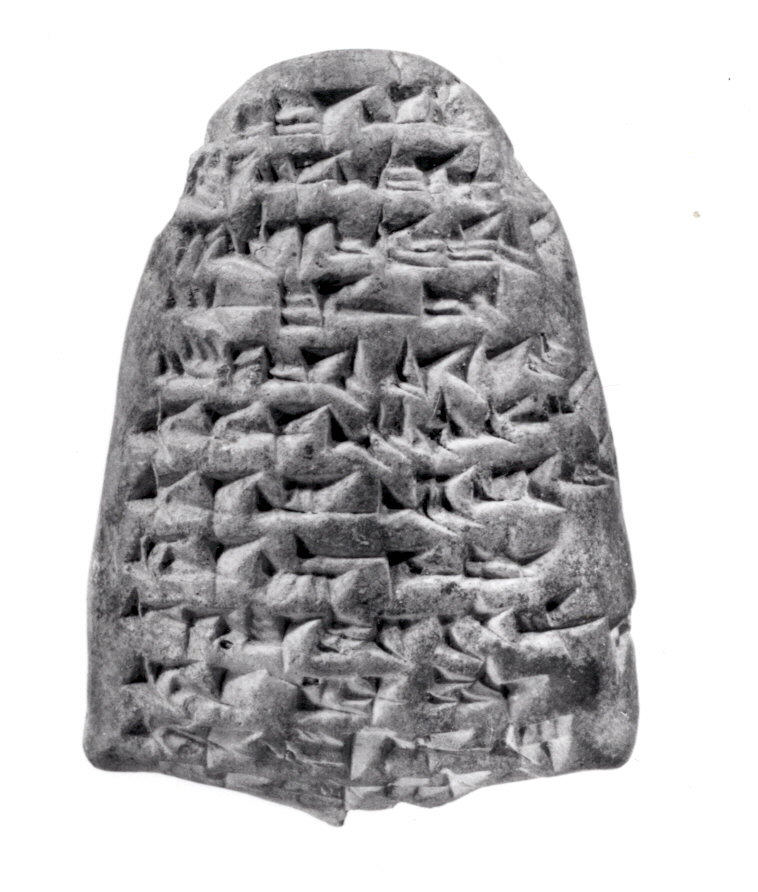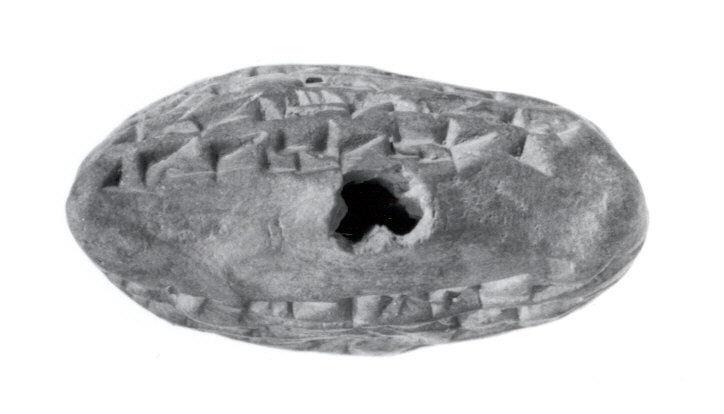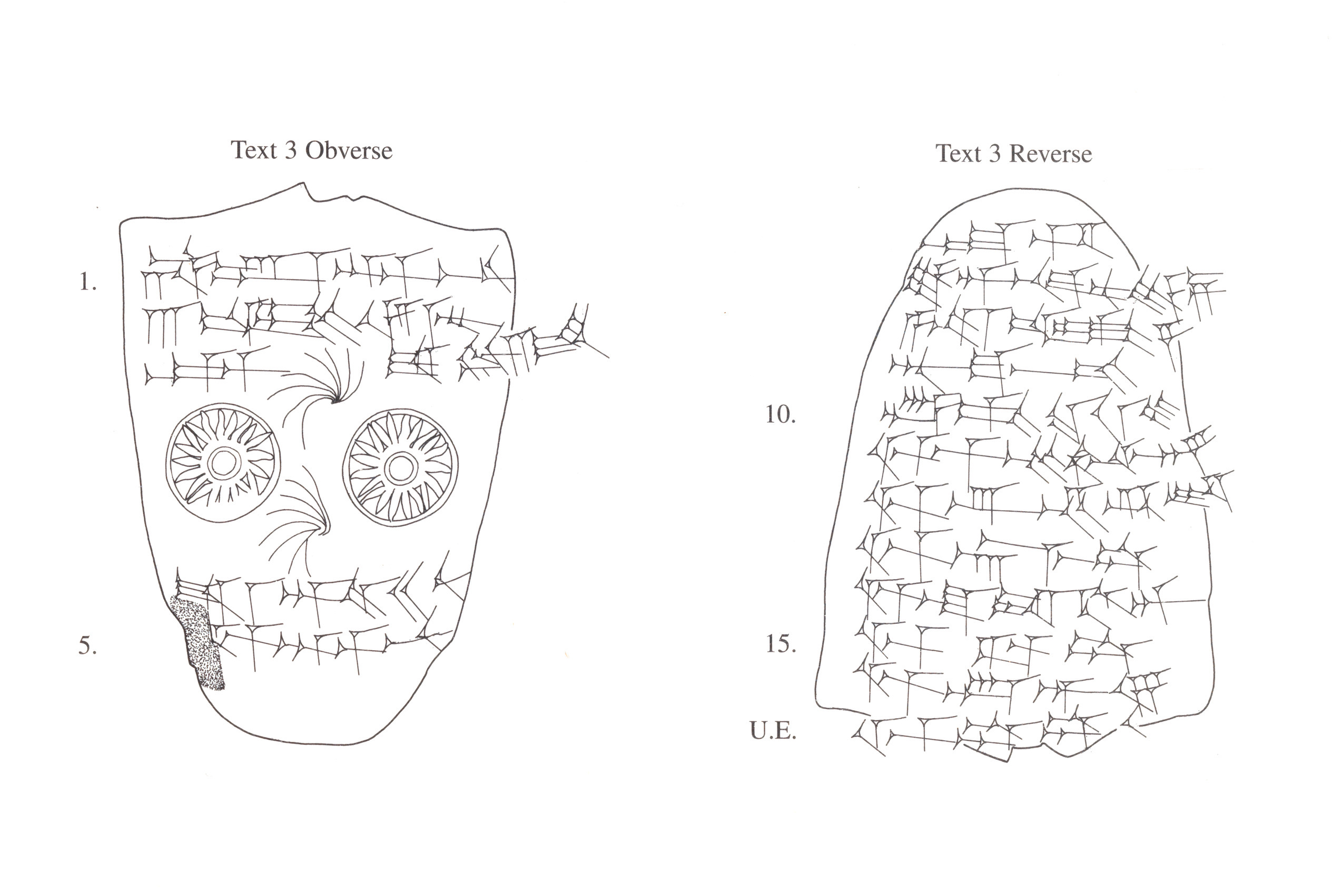Triangular label impressed with stamp seal: for grain loan
Not on view
The invention of writing in approximately 3300 B.C. was one of many developments in administrative technology--including the use of geometric tokens for counting and cylinder seals to guarantee transactions--that accompanied the growth of the first cities and states in southern Mesopotamia. Proto-cuneiform is the name given to the earliest form of writing--pictograms that were drawn on clay tablets. Gradually, the pictograms became abstracted into cuneiform (Latin, "wedge-shaped") signs that were impressed rather than drawn. At its greatest extent, cuneiform writing was used from the Mediterranean coast of Syria to western Iran and from Hittite Anatolia to southern Mesopotamia. It was adapted to write at least fifteen different languages. The last dated cuneiform text has a date corresponding to A.D. 75, although the script probably continued in use over the next two centuries.
This clay object is a triangular-shaped label used to record a loan of grain. The cuneiform text which reads from left to right identifies the individuals involved, Shamash-sharru-usur and Ninurta-nadin-ahi, and also lists a number of witnesses. The label is impressed twice with a stamp seal with the design of a rosette. According to a caption the seal belonged to Ninurta-nadin-ahi, the man who received the advance of grain. Two counterclockwise whorls are incised between the stamped rosettes. They may represent either a type of countermark or perhaps a "signature" added by the scribe of the tablet.
The label was excavated at the site of Nimrud in northern Mesopotamia. It was part of the archive of a certain Shamash-sharru-usur, a high official who was active during the reign of the Assyrian king Ashurbanipal.
Due to rights restrictions, this image cannot be enlarged, viewed at full screen, or downloaded.
This artwork is meant to be viewed from right to left. Scroll left to view more.





